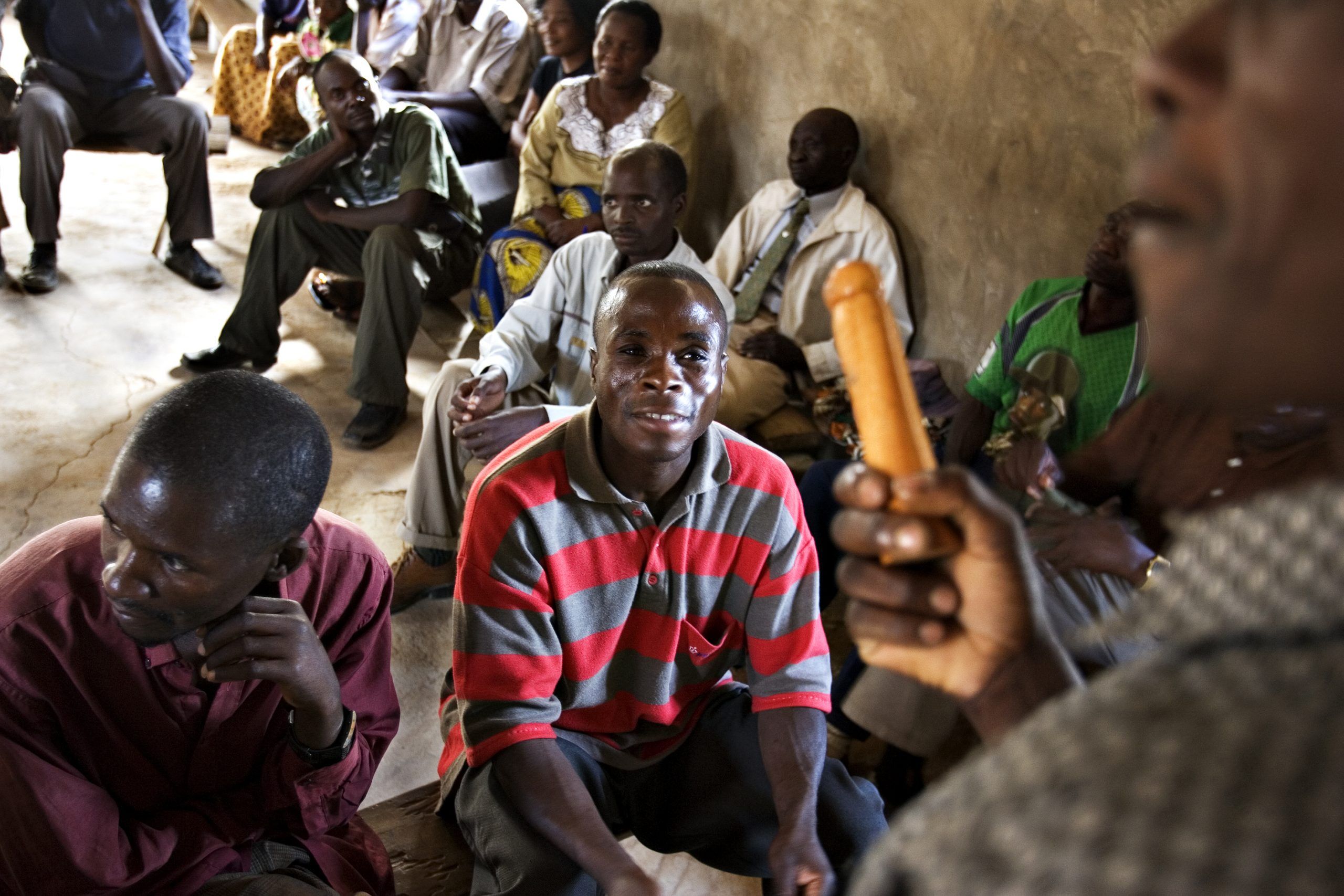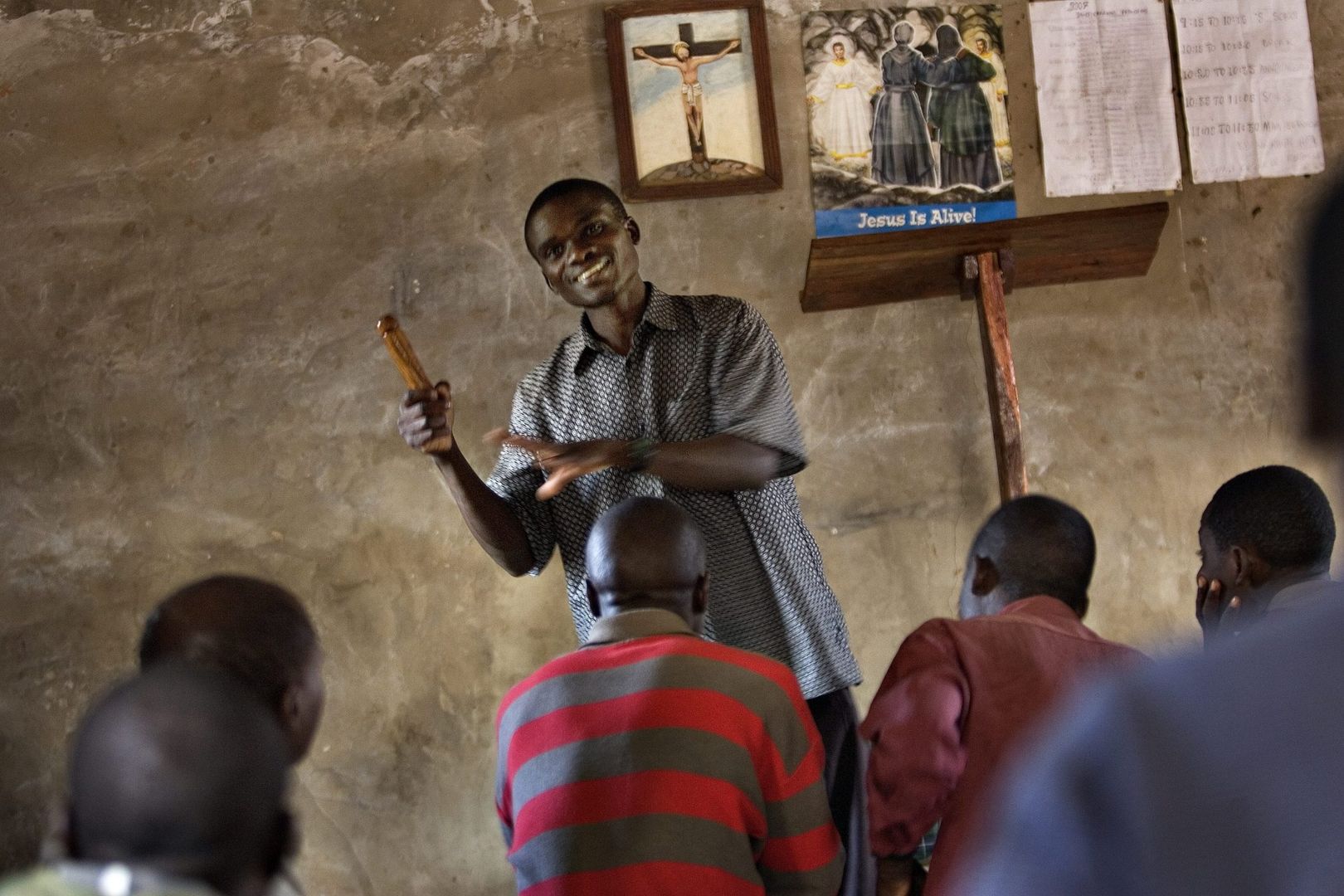When HIV/AIDS hit the African continent, the virus spread rapidly. It was particularly bad in the Kagera area in the northwest corner of Tanzania, where the first person with HIV in Africa was diagnosed in 1983.
Here, the hospitals were overwhelmed with people suffering from AIDS. There were no health professionals, medicines, or equipment, and – as was the case in many places – there was no knowledge of how to avoid infection.
This is where in 1987 DanChurchAid began the HIV/AIDS work that later became a permanent component in many projects across Africa and other continents.
HIV
A person infected with HIV has a chronic infection and will have the virus in his or her body and blood for life. However, people treated with anti-retroviral therapy (ART) will have so little virus in their blood and tissue fluids that they do not risk infecting others.
Source: Statens Serum Institut (Denmark’s national institute for infectious diseases)
Equipment, education, and care
“We developed a three-pronged project – we sent much-needed equipment to all Lutheran hospitals in Tanzania, disposable gloves, HIV tests, soap, refrigerators to keep the tests cool, and similar items. Secondly, we taught nurses to train family members of people with AIDS to care for the dying in their own home to give them a dignified death.” Bodil Holmsgaard worked in DanChurchAid’s Material Aid Department in the 80s and 90s.
“The third prong was education. In many places – especially in the rural areas – people knew very little about HIV and AIDS despite the widespread infection. It was not spoken of because it was shameful that HIV was transmitted through sex. We needed a massive information campaign.”
“Slim disease”
The disease was easy to recognise. People with AIDS lost dramatic amounts of weight. Nicknamed slim disease, it was found in one country after another across Africa. DanChurchAid expanded its work.
First to neighbouring Uganda and then to Malawi, Kenya, Zambia, Lesotho, Eritrea, and Ethiopia.
The projects varied from country to country depending on the consequences of the disease and the needs of patients.
The development of a “social vaccine”
In Zambia, DanChurchAid supported the development of a kind of “social vaccine” through the Church Council of Zambia. These were self-help groups of HIV-infected persons and village groups called “Circles of Hope” that helped each other, supported orphans, acted as in-home nurses for AIDS patients, and provided information about the disease to prevent infection and discrimination.
Close collaboration between the Danish Guide Association and the Girl Guides Association of Zambia – supported by Danida and with DanChurchAid as a third party – provided targeted information for girls on HIV/AIDS as well as on the right to say no to sex.

Gender roles and schooling
In a slum neighbourhood in Nairobi, Kenya, DanChurchAid worked through Kenya Voluntary Women’s Rehab to support a business entrepreneur programme for vulnerable young women. They were helped to open hairdresser shops, vegetable stands, or other small businesses through microloans and thus to reduce the need for making money through prostitution.
In Ethiopia, discussions were held on gender roles and women’s right to make decisions about their own bodies.
In a part of Uganda where children had been left to fend for themselves after the death of their parents, it was the responsibility of the family’s eldest child to care for younger siblings and support the family. Here, projects helped children go back to school.
A wooden penis
In some areas, almost every other person aged 15-44 was infected with HIV. Many avoided being tested because infection in many places led to stigmatisation and exclusion – and there was no treatment in any case.
Tanzania’s Kagera district borders Uganda’s Rakai district, and thousands of trucks travel the road between the two districts.
Drivers bought sex from women who earned a living along the road. Here, HIV spread like wildfire. They called it ‘The Death Route’.”Bodil Holmsgaard, formerly employed by DanChurchAid’s Commodity Aid Department
“We needed to tell it like it is and explain how HIV infection is spread. It was so important that the information got out to everyone, including very young people who had not yet become sexually active. Only in this way could we put a stop to the spread of infection.
One way was to educate young volunteers to teach other young people. The volunteers visited schools, churches, and youth clubs, demonstrated how to use a condom on a wooden penis, and explained that HIV is a sexually transmitted disease that can be avoided by using condoms. But talking openly about such a subject was completely new. It garnered much attention when we set up a machine with free condoms in our office.” says Bodil Holmsgaard.
DanChurchAid: 100 YEARS OF HOPE AND ACTION
2022 marks the 100th anniversary of DanChurchAid’s work to save lives, build resilient communities, and fight extreme inequality worldwide.
DCA’s anniversary is a story of 100 years of hope.

